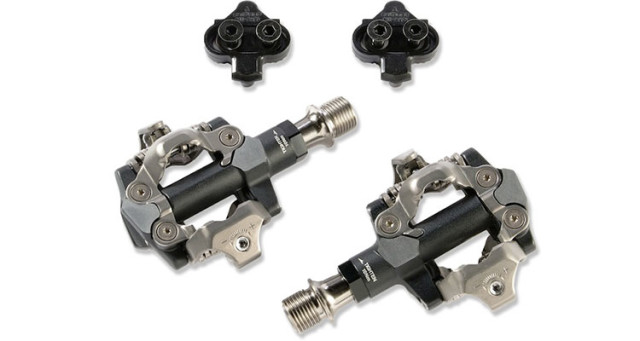The pedals of the bike are an essential component of the bike: like any bike, it is the pedals that allow the rider to transmit the power of cycling to mountain biking. In the particular case of the bike, the pedals are also an essential element for the balance of the rider during the most demanding downhill and maybe dynamics require almost acrobatic. Again, as with other components of the bike, the pedal ideal choice depends on how you use the bike, and how much we want to spend to buy them.
The materials used to make the pedals are varied, because every single part of a pedal has to perform different functions and have different characteristics. It goes from alloys of steel or aluminum, by the use of chromium, molybdenum and titanium in thermoplastic materials or carbon composites.
The types of pedals for MTB.
The pedals for MTB can be divided into three major groups based on structural characteristics:
- The clipless pedals, with docking system for the cyclist’s shoe.
- The flat pedals (plates), which are devoid of a coupling system.
- The pedal’s hybrid (dual function): on one side of the pedal is the attachment system, on the other side instead of the pedal is flat.
The evolution of construction planning, driven by the needs of enthusiasts and racers, led to the creation of ever lighter pedals, reliable and flexible, as well as different features. Among the models, rapid release, for example, there are today pedals from support base almost nonexistent, where traction and thrust are based on the coupling shoe / pedal. Models are lighter, of course, and also less likely to suffer the onslaught of mud.
Pedals with locking system. The clipless pedals offer greater pedaling efficiency because you cannot just push on the pedal, but also pull. In this way, it is possible to exert force on the pedal throughout the pedaling cycle. In addition, the shoe always remains attached to the pedal, and you do not run the risk of slipping off during times of increased engagement. Among the most popular coupling, systems remember the SPD, Shimano invented by the Japanese, but can also be used by other manufacturers. Other manufacturers are using different solutions, such as Crank Brothers or Ritchey.
The clipless pedals can in turn be divided into two main types of construction:
- Pedals with cage.
- Pedals without a cage.
In the first case, the pedal is equipped with a cage for supporting the shoe which improves the contact of the shoe attached to the pedal. The surface to be broad support provides greater safety on routes, particularly rough or curved. The cage also has a protective function against minimal impact on the coupling device and against shock, the shoe of obstacles along the way that could cause tripping sudden. The disadvantage is given by the greater weight of this solution compared to that without the cage.
In the pedals without a cage, the structure of the pedal and accordingly, the support surface with the cyclist’s shoe are kept to a minimum. In practice, the support takes place only via the cleat of the shoe. Given the difficulty of controlling the bike with this type of pedals are mainly used in cross-country or at least on routes where you do not expect too to demand descents.
Flat Pedals.
Flat pedals in the grip of the shoe is made on the cage of support, but the pedals are without engagement mechanisms. The shoe is bound to pedal thanks to the teeth (pin) grafted on the surface of steel pedal and grip the surface of the sole of the foot. The support surface provided by the cage of flat pedals is usually quite wide. The flat pedals are used mainly in the disciplines of downhill and freeride, because they allow the athlete to always immediately put the foot on the ground or other support surface without the hassle of having to unclip from the pedals, but also to avoid further problems in the event of a fall.
Pedals dual function.
The pedal’s dual function pedals are constructed in such a way as to have both solutions seen previously: on one side of the pedal is present in the quick-release system which allows to fix the shoe to the pedal, while the other side is a flat type.
Maintenance of MTB pedals.
The models of the pedals are many and different from each other: each pedal requires interventions indicated by the manufacturer or suggested by the expert or by my trusted mechanic. It will follow the manufacturer’s instructions for removing the pedal and for its cleaning and lubrication. They always used tools of good quality and suitable for the work to be done, handling them with care to avoid damage to other parts of the bike or getting hurt.











